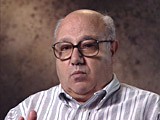You searched for: %EC%95%84%EB%93%9C%EB%A0%88%EB%8B%8C%ED%80%B5%EB%B0%B0%EC%86%A1%20K444.top%20%EC%8B%9C%EC%95%8C%EB%A6%AC%EC%8A%A4%ED%8C%90%EB%A7%A4%20%EB%A0%88%EB%B9%84%ED%8A%B8%EB%9D%BC%EC%A7%80%EC%86%8D%EC%8B%9C%EA%B0%84%20%EC%8B%9C%EC%95%8C%EB%A6%AC%EC%8A%A4%EC%A7%81%EA%B5%AC%20ozzT
<< Previous | Displaying results 451-475 of 526 for "%EC%95%84%EB%93%9C%EB%A0%88%EB%8B%8C%ED%80%B5%EB%B0%B0%EC%86%A1%20K444.top%20%EC%8B%9C%EC%95%8C%EB%A6%AC%EC%8A%A4%ED%8C%90%EB%A7%A4%20%EB%A0%88%EB%B9%84%ED%8A%B8%EB%9D%BC%EC%A7%80%EC%86%8D%EC%8B%9C%EA%B0%84%20%EC%8B%9C%EC%95%8C%EB%A6%AC%EC%8A%A4%EC%A7%81%EA%B5%AC%20ozzT" | Next >>
-
The Search for Perpetrators
ArticleThousands of Nazi criminals were never arrested. Learn more about the postwar efforts to bring Nazi perpetrators to justice.

-
Westerbork
ArticleThe Westerbork transit camp, located in the German-occupied Netherlands, served as a temporary collection point for Jews in the Netherlands before deportation.

-
Life After the Holocaust: Aron and Lisa Derman
ArticleAfter WWII and the fall of the Nazi regime, Holocaust survivors faced the daunting task of rebuilding their lives. Listen to Aron and Lisa Derman's story.
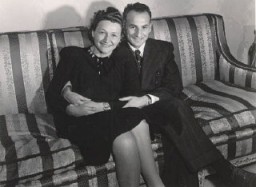
-
Felix Horn describes a hiding place in Warsaw
Oral HistoryFelix was born to an assimilated Jewish family in Lublin, Poland. His father was a locksmith and his mother was a singer. Following the German invasion of Poland on September 1, 1939, Felix fled east to Rovno and then to Soviet-occupied Lvov, where he was accepted at a medical school. After the German invasion of the Soviet Union in June 1941, Felix was taken to a labor camp. He escaped and returned to Lublin, and found that his family had been forced into the ghetto established there. After the…

-
Hajj Amin al-Husayni: Wartime Propagandist
ArticleFormer Mufti of Jerusalem Hajj Amin al-Husayni was an exiled political leader who sought an alliance with the Axis Powers. Learn about his wartime propaganda efforts.
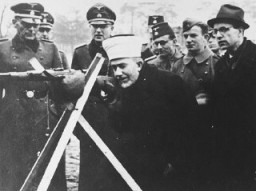
-
Holocaust Denial: Key Dates
ArticleBrowse a timeline listing some key events in the evolution of Holocaust denial and the distortion of the facts of the Holocaust.
-
The Nazi Persecution of Black People in Germany
ArticleRead about the Nazi persecution of Black people, as well as Black people's experiences in Germany before the Nazi rise to power.
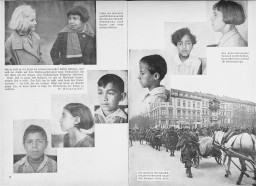
-
Selma (Wijnberg) Engel describes deportation to Sobibor
Oral HistorySelma was the youngest of four children born to Jewish parents. When she was 7, Selma and her family moved to the town of Zwolle where her parents ran a small hotel. When the Germans invaded the Netherlands in 1940, they confiscated the hotel. The family had to live in a poor Jewish section of the town. Selma went into hiding but was betrayed and then sent to the Westerbork camp. In April 1943 she was deported to Sobibor, where she worked in the clothes sorting area. There, the prisoners tried to pocket…

-
William Denson describes the nature of the evidence uncovered for postwar trials of concentration camp personnel
Oral HistoryWilliam Denson graduated from the US Military Academy at West Point in 1934 and attended Harvard Law School. He returned to West Point to teach law from 1942 until 1945. In January 1945, Denson accepted the position of Judge Advocate General (JAG) in Europe and was assigned to US Third Army headquarters in Germany. He took part in more than 90 trials against Germans who had committed atrocities against downed American pilots. In August 1945, Denson became chief prosecutor for the US government at the…

-
The Aftermath of the Holocaust
Animated MapView an animated map describing some of the challenges survivors faced in the aftermath of the Holocaust, when many feared returning to their former homes.

-
Chaim Frenkiel
ID CardChaim was the third of seven boys born to religious Jewish parents. They lived in a town near Warsaw called Gabin, where Chaim's father worked as a cap maker. Gabin had one of Poland's oldest synagogues, built of wood in 1710. Like most of Gabin's Jews, Chaim's family lived close to the synagogue. The family of nine occupied a one-room apartment on the top floor of a three-story building. 1933-39: In September 1939, two months before Chaim was 12, Germany invaded Poland. In Gabin 10 people were shot in…
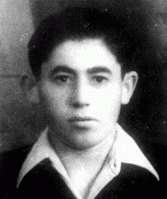
-
Jakob Frenkiel
ID CardJakob was one of seven boys in a religious Jewish family. They lived in a town 50 miles west of Warsaw called Gabin, where Jakob's father worked as a cap maker. Gabin had one of Poland's oldest synagogues, built of wood in 1710. Like most of Gabin's Jews, Jakob's family lived close to the synagogue. The family of nine occupied a one-room apartment on the top floor of a three-story building. 1933-39: On September 1, 1939, just a few months before Jakob turned 10, the Germans started a war with Poland.…

-
Andras Muhlrad
ID CardThe second of two children, Andras was born to Jewish parents living in a suburb of Budapest. His father was a pharmacist. The Muhlrads lived in a large house with Andras' grandfather and aunts. As a toddler, Andras often played with his older sister, Eva, and their cousins in the big yard behind their home. 1933-39: Andras was 4 when his family moved to their own apartment. It was 1936 when he began primary school and Hitler had already been in power in Nazi Germany for three years. At night his father…

-
David Bergman
ID CardDavid was born to religious Jewish parents in a small town in Ruthenia, Czechoslovakia's easternmost province, which had been ruled by Hungary until 1918. Located in the Carpathian Mountains, the town was so isolated that news from the rest of the country would arrive by a drummer who would read the news in the town's central square. David's father worked as a tailor and his mother was a seamstress. 1933-39: While David's parents worked, he would be at home having a good time. They had a beautiful home…
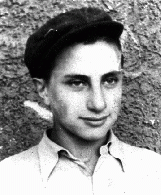
-
David J. Selznik
ID CardThe village in Lithuania where David grew up was located near the Latvian border. His father was a peddler. At age 6, David was sent to Ukmerge, a town known to Jews by its Russian name, Vilkomir, to study traditional Jewish texts at the rabbinical academy there. Six years later, David was called to return home to head the Selznik family because his father had died. 1933-39: David lost his job in 1933, so he left Lithuania and went to the United States and then Portugal. But in 1936 the Baltic states were…
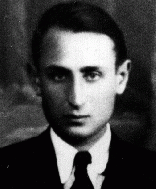
-
Dezso Rozsa
ID CardDezso was from a Jewish family in Hungary's capital, Budapest. His father had been a violinist. Dezso earned a university degree in English, and became a language teacher. He wrote a number of high school grammar textbooks. In 1914 he married Iren Hajdu, who was a mathematician. The couple had two children; a daughter, Eva, born in 1918, and a son, Pal, born seven years later. 1933-39: Dezso fears for the worst now that the antisemitic Prime Minister Teleki has taken power again. Nineteen years ago, in…
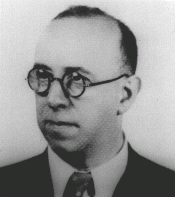
-
Arthur Karl Heinz Oertelt
ID CardHeinz, as he was usually called, was born in the German capital to religious Jewish parents. He and his older brother, Kurt, attended both religious and public schools. His father had died when he was very young. His mother, a seamstress, struggled to make ends meet. She and the boys lived in a predominantly Christian neighborhood. 1933-39: It frightened Heinz when Nazi storm troopers sang about Jewish blood dripping from their knives. But his family didn't have money to leave Berlin. In late 1939 Heinz…
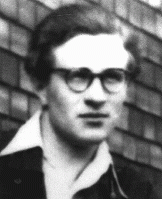
-
Aron Dereczynski
ID CardAron and his three sisters were raised in a traditional Jewish family in the town of Slonim. Most of Slonim's inhabitants were Jewish, and the town had a long tradition of Hasidic scholarship. Aron's father, Chaim, owned a yard-goods and clothing store. 1933-39: Aron attended a Hebrew-language middle school and was active in the Zionist youth movement, Ha-Shomer ha-Tsa'ir. He had been accepted to study in an agricultural school in Palestine when war broke out in September 1939 and Slonim fell under Soviet…
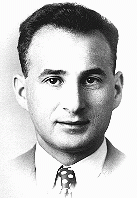
-
Nazi Racism
ArticleNazi racism and racial antisemitism ultimately led to mass murder and genocide. Learn more about Nazi racial ideology.
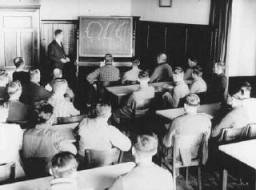
-
Herman Klein
ID CardHerman was the fourth of eight children born to a religious Jewish family in the small town of Sirma, located near the city of Sevlus. The Kleins had a small plot of land, which they farmed, and they also ran a shoe shop. At age four Herman began attending religious school. When he started public elementary school, he continued his religious lessons in the afternoons. 1933-39: In March 1939, the region of Czechoslovakia in which Herman lived was annexed to Hungary. His teacher at school was replaced by a…
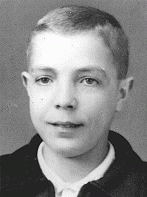
-
Magda Hellinger
ID CardMagda was the only daughter in a family of five children. Her town of Michalovce, in eastern Slovakia, was an agricultural trade center and it had a large Jewish population. Magda's father taught Jewish history in local Jewish schools. Magda grew up learning Hebrew songs and listening to stories about Jewish history. 1933-39: It's Magda's nature to work with people and to help them work together. In Michalovce she studied to become a kindergarten teacher, and worked to establish a new chapter of the…

-
Jozef Tiso
ArticleJozef Tiso was a Slovak politician and a Roman Catholic priest. From 1939 to 1945, he was the president of the Slovak Republic, one of Nazi Germany’s allies.
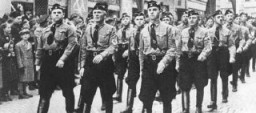
-
David Stoliar describes holding onto a piece of wreckage from the deck of the torpedoed Struma
Oral HistoryIn 1936, David moved to Bucharest to live with his father. As Romania came under German influence, Romanian authorities introduced increasingly harsh measures against Jews. Antisemitic agitation increased and Jews came under attack in the streets of Bucharest and in other public places. David's father decided David should leave the country and arranged passage for him to Palestine. In December 1941, David left Romania from Constanta, a port city on the Black Sea, on the Struma, an old cattle boat. The…

-
Helen Lebowitz Goldkind describes German humiliation of her grandfather in the Uzhgorod ghetto
Oral HistoryIn 1938-39, Hungary annexed the area of Czechoslovakia in which Helen lived. After Germany occupied Hungary in 1944, Helen and her family were deported to the Uzhgorod ghetto. As Jews, they were soon transferred to various camps, where much of the family perished. Although at times Helen was too weak to walk, she and her older sister survived Auschwitz, forced labor at a camp munitions factory, and Bergen-Belsen.
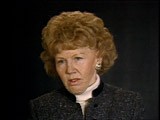
-
Fred Deutsch describes conditions in hiding place in forest
Oral HistoryFred was born in Czechoslovakia in a town near the Polish border. Fred and his family were forced by the Germans to relocate east to a town bordering Slovakia. At the end of 1942, they escaped from the town and went into hiding. The family hid in bunkers in the forest until the end of the war. They moved every few weeks to avoid detection by the Germans or Slovak authorities. While the family was in hiding, Fred's grandfather made arrangements for Fred to attend school under an assumed name and religion. A…
